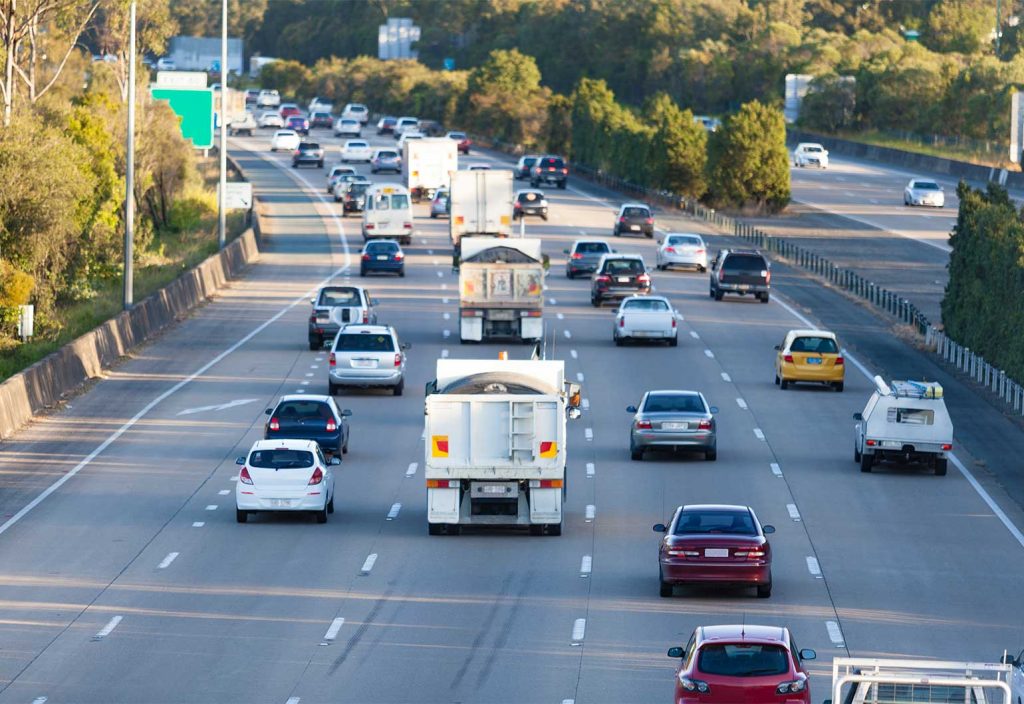Vehicle crashes are the leading cause of work-related deaths in Australia. create spoke to transport engineering specialists about how a safety-first culture could make a difference.
In 2019, road accident deaths accounted for 43 per cent of the 183 workers fatally injured at work, and 72 per cent (132) of the total number of deaths were related to vehicles. By comparison, 11 per cent were caused by falling objects and a further 11 per cent by falling from height.
As well as truck drivers and passenger transport workers, this includes people working with agricultural and construction vehicles, as well as workers travelling to and from jobs in other sectors.
According to Engineers Australia member Dr Brett Hughes MIEAust, traffic engineer and road safety researcher, road safety in Australia has been languishing for some time.
He said road deaths and injuries are considered as one of many competing microeconomic project costs, which did not take into account the suffering of victims and their loved ones.
“We should separate them out as deaths and serious injuries before and after road projects,” Hughes said.
Traffic engineer and transport economist, Engineers Australia member and Chartered engineer Dr Scott Elaurant MIEAust CPEng, added that road crash costs have been undervalued when counting only public costs such as damage to roads and expenses to public agencies. The private cost to individuals is also very high, and often life altering.
“That cost is still real, it’s borne by people in our community,” he said.
“And when you add that in, you get a very different answer to how much attention we should pay to road crashes. The true cost of road crashes is greater than the cost of road congestion.”
Safety-first road culture
As part of Engineers Australia’s advocacy for safer roads, Hughes and Elaurant presented expert evidence at a hearing of the Senate Standing Committee on Rural and Regional Affairs and Transport earlier this year. The committee recently released its findings and recommendations.
“The committee provided the opportunity for Engineers Australia to promote its perspective to reset the road safety agenda within the freight industry,” Hughes said.
The focus of the report is on safety, sustainability and efficiency for the road transport industry, where 20 per cent (183) of all workplace deaths occurred between 2015 and 2019. Of these deaths, 137 were due to road accidents.
“It’s a very multifaceted report, from rest areas and congestion to road safety,” Hughes said.
Hughes and Elaurant both stressed that road infrastructure projects need a culture shift from focusing on congestion and travel costs to reducing road injuries and deaths (safety-first).
“We need to elevate road safety so it’s a primary responsibility for engineers, designers and road authorities,” Hughes said.
One challenge is that the vast majority of Australians live in cities and experience road congestion firsthand, Elaurant added, while serious road crashes affect a much smaller percentage of the population.
“For those people it’s absolutely devastating. But because most people never experience it, they don’t appreciate how big a problem it is,” he said.
Road safety duty of care
While regulators have charged truck drivers with dangerous driving in the past, it has not been common for employers to be held accountable for deaths and injuries caused by defective vehicles, or failing to meet their obligations to employees.
There are signs that this may change. In April, sewage truck company Cleanaway was found guilty of failing to train a driver whose truck crashed into a car on a downhill slope in 2014, killing two people. The truck’s rear brakes were also badly worn, and were likely to have overheated and prevented the driver from braking.
Elaurant believes this conviction sends a “short, sharp message” to employers, but is not yet the norm.
“There’s a need for more uniform action by regulators in all jurisdictions to enforce the existing laws on employers,” he said.
Hughes said engineers also have a duty of care under their professional charter to design roads that are as safe as they can be.
“Engineers need to move away from meeting standards to best practice,” he said.
He added that instead of asking ‘does it meet the standard?’, engineers should ask themselves ‘is it safe?’ For example, wider median strips and road shoulders, flashing hazard lights and rumble strips should be used whenever possible. More money should also be spent maintaining and improving rural roads, where most fatalities happen.
Australian road design guides and standards also need to be updated to include the safest procedures used overseas.
But Elaurant pointed out that for positive change, safety needs to be routinely included as a measurable project outcome.
“Until we do that, safe designs will never win a competitive bid,” he said.
No silver bullet
Hughes’s PhD research was focused on developing a comprehensive framework for road safety strategies.
“Road safety isn’t rocket science, it’s much more complex,” he said.
One piece of the puzzle is to ensure that engineering registration is mandatory for road infrastructure designers in all states.
“We understand we need safe buildings. But more people die on roads than in buildings falling down or catching fire. Qualification of the road designer is no less important,” Elaurant said.
Hughes emphasised the need for engineers, managers, designers and regulators to consider safety as implicit to every aspect of road infrastructure projects and operation.
“Silver bullets don’t work in a complex system,” he said.
“We need divergent thinking.”
